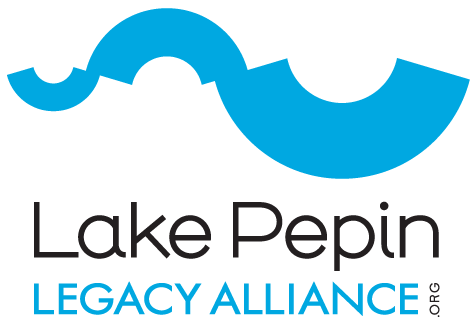The Minnesota Pollution Control Agency (MPCA) recently released a series of water quality reports that analyze upstream sediment from the Minnesota River Basin and excess phosphorus in Lake Pepin. These reports are very important because:
They directly relate to Lake Pepin's water quality impairments (phosphorus & sediment).
They all focus on pollution from the Minnesota River Basin.
Phosphorus and sediment are highly interrelated pollutants. (Phosphorus binds to and travels with soil particles. To meet water quality goals for phosphorus, you need to reduce sediment loading—and vice versa.)
The Minnesota River Basin is a focus because it contributes 75-90% of the sediment flowing into Lake Pepin every year. The unprecedented sediment loads aren’t just a problem for Lake Pepin, however; they are also problematic to the Minnesota River itself, conjoining tributaries, and homeowners who are losing property to erosion.
LPLA is hosting a special event to discuss new MPCA reports and what they mean for Lake Pepin. Attendees will have an opportunity to review the studies, talk with MPCA staff, and submit formal comments. We hope all our supporters—and everybody invested in Lake Pepin's future—will attend. Refreshments will be available. This is an LPLA sponsored event. It is NOT a formal MPCA meeting.
MPCA MN River Website with all four TMDLs
MPCA Lake Pepin Excess Nutrient website
Thursday, August 29th from 4-7 PM
Open House w/ formal presentation at 5:30 PM
Lake City Sportsman's Club
2200 S Oak St, Lake City, MN 55041
*The MPCA reports are called TMDLs, or Total Maximum Daily Loads. They basically serve as a pollution diet plan for a specific river, stream, or lake. The reports calculate current pollution loads, the maximum pollution a waterbody can absorb without exceeding water quality standards, and pollution reduction needs. Learn more-->
*A Revised Sediment Reduction Strategy for the Minnesota River Basin and South Metro Mississippi River to expected in 2020.
Interestingly, media attention related to the new MPCA reports has centered on the call for a 50% sediment reduction from the Minnesota River by 2030. This is definitely worth widespread attention—and alarm—but it is not new information. In 2015, the MPCA released a report, called "Sediment Reduction Strategy for the Minnesota River Basin and South Metro Mississippi River", that outlined the following reduction goals for the MN River (see page 16):
25% sediment reduction by 2020
50% sediment reduction by 2030 (for Lake Pepin)
90% sediment reduction by 2040 (for the MN River)
The new MPCA reports (open for public comment until Sept. 20th) reference these goals, but did not develop them. The recent MN River reports identify pollution sources, allocate pollution reductions, and implementation plans for areas nested within the larger Minnesota River Basin. The Lake Pepin report does the same, but across its entire watershed, including 48% of Minnesota.











